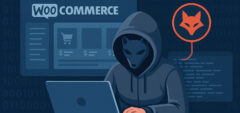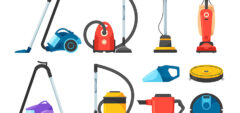When it comes to ecommerce, it’s worth remembering – you’re not running a charity.
Profit is king. But if your business is growing, and so are your maintenance, apps, ads, and logistics costs – you’re going to have a hard time increasing it.
Most brands don’t have a revenue problem – they have a leakage problem.
And to find where the money’s slipping out isn’t always as easy or obvious as it seems.
This is where ecommerce cost optimization comes in.
It’s a set of tactics and strategies that smart ones are using to build lean systems that support growth, not suffocate it. And we’ll help you do the same.
But how?
We’ll show you how to identify opportunities to cut costs (and earn more) based on your business model and size, which strategies to apply, when to apply them, which metrics to track, and how to prioritize things.
No matter if you’re a one-man show, mid-size player, or an enterprise – these strategies apply.
No BS. No vague “journey mapping”. Just real advice backed by experience, expertise, and data.
Let’s start with understanding the concept of cost optimization and why it’s important.
Ecommerce Cost Optimization – What is It?
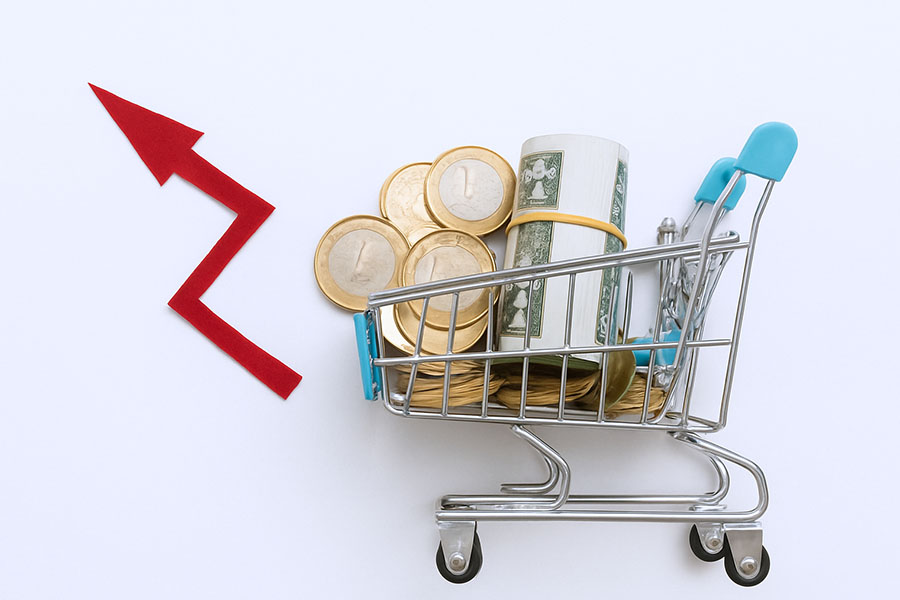
Ecommerce cost optimization isn’t just about trimming fat.
It means building lean systems that scale without setting your margins on fire, by making intentional decisions about:
- What you pay for
- What you automate
- What you outsource
- What’s essential vs what’s “nice to have”.
The ultimate goal is more output per dollar spent.
E-commerce cost structure
Almost every online store spends money on some core expenses, which can be sorted into these categories:
- COGS (Cost of Goods Sold) – Includes product manufacturing, sourcing, packaging, and fulfillment
- Shipping & Logistics – Carrier fees, warehousing, returns management
- Technology & Tools – Platforms (Shopify, Magento), plugins, third-party SaaS, analytics
- Team & Ops – Salaries, payroll taxes, contractors, support, fulfillment staff
- Website Maintenance & Development – Bug fixes, updates, optimization
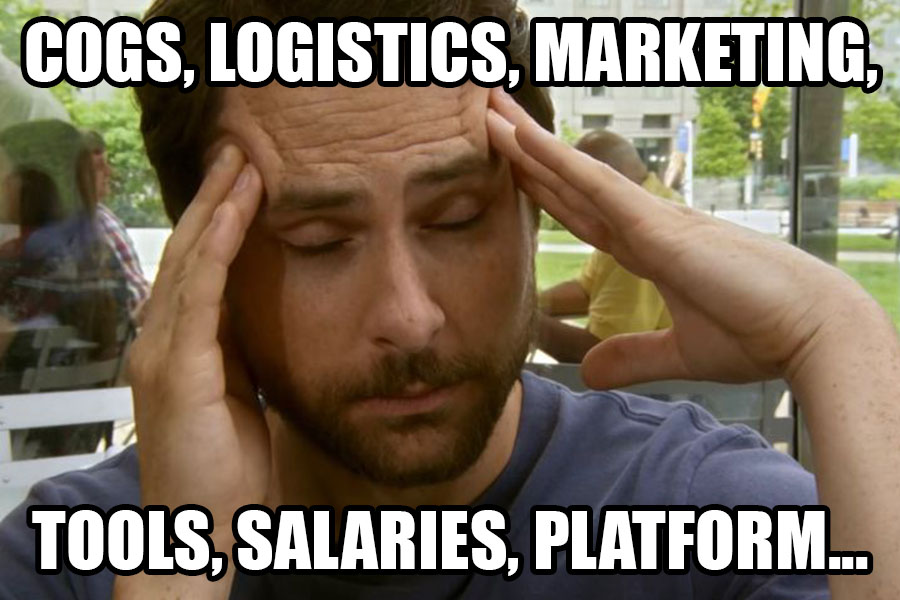
The tricky part is that once the business grows to a certain point, keeping track of these expenses and their ROI becomes almost impossible.
Is cost reduction that important?
Yes. And more than most realize.
It’s easy to chase revenue. But in ecommerce, revenue ≠ profit – and that misunderstanding kills more businesses than bad marketing ever could.
According to CB Insights, 38% of failed startups cite running out of cash as the reason for shutting down – not lack of sales. In many cases, they were growing revenue fast but scaling unprofitably due to rising costs in tech, logistics, and acquisitions.
That’s where ecommerce cost optimization comes in.
Done right, it helps you: increase net profit, stay resilient during slow seasons, build a competitive advantage, and free up budget for innovation.
If you’re serious about making it in the market that gets more competitive by the day, it’s not optional.
Then, why are so many online stores poorly optimized?
There are a few reasons:
- You only think they’re poorly optimized.
Judging by design or surface-level features won’t tell you if a store is bleeding cash or printing money.
- Optimization isn’t sexy. Growth is.
Increasing Customer Lifetime Value (CLV) by 10% doesn’t sound as exciting as acquiring 1000 new customers through paid ads – even though those ads often burn cash, while a CLV increase delivers sustainable, long-term profit.
- People fix what’s urgent, not what’s important.
This often leads to wasted ad spend, bloated tech stacks, no clear strategy, and many other problems.
- There’s no time.
After a few years in the business (especially if you’re a one-man show wearing multiple hats), everyday tasks leave little room for big-picture improvements.
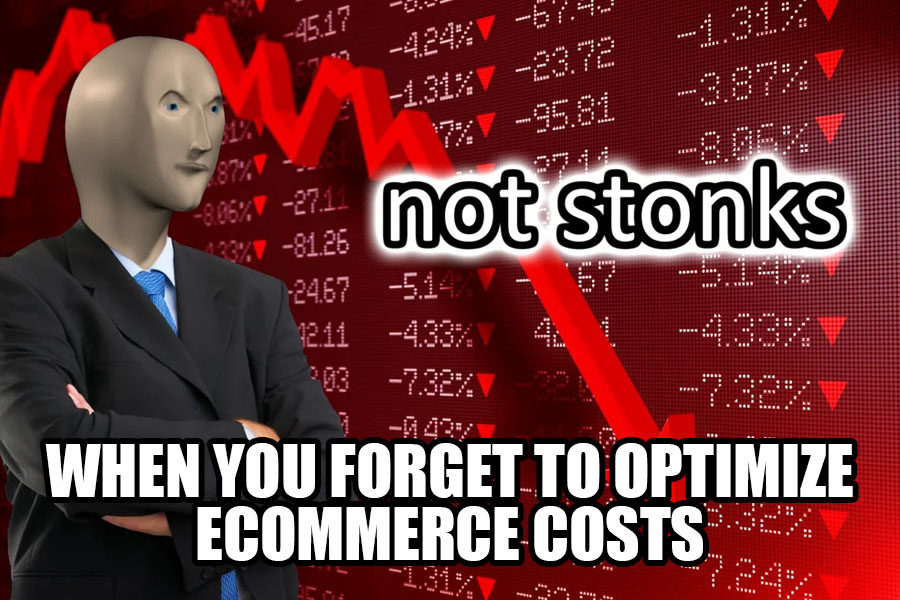
How to Identify Opportunities to Cut Costs?
Now, let’s see where the money is most likely to leak, based on your business model:
D2C: Optimize for Profit per Visitor
Here, you control almost everything, so no leverage should be wasted:
- Low CLV (Customer Lifetime Value)
Add upsells on PDPs. Offer a subscription at checkout and test post-purchase emails. Getting the old customer to buy again or more, is much easier and cheaper than acquiring a new one.
- High returns = revenue rot
Use native visuals, not staged or overly edited images. Add size guides and comparison tables. Be upfront about shipping timelines.
A 2 – 3% drop in return rate can mean thousands in recovered profit over time (without touching ad spend).
- Slow website = High bounce rate
It’s 2025. Most people won’t wait more than 3 seconds – if even that much.
Your site speed, checkout load time, and codebase inefficiencies all affect your conversion rate.
Invest in maintenance before you’re losing 4 to 5 figures/month to technical debt.
B2C: Audit Volume Leaks
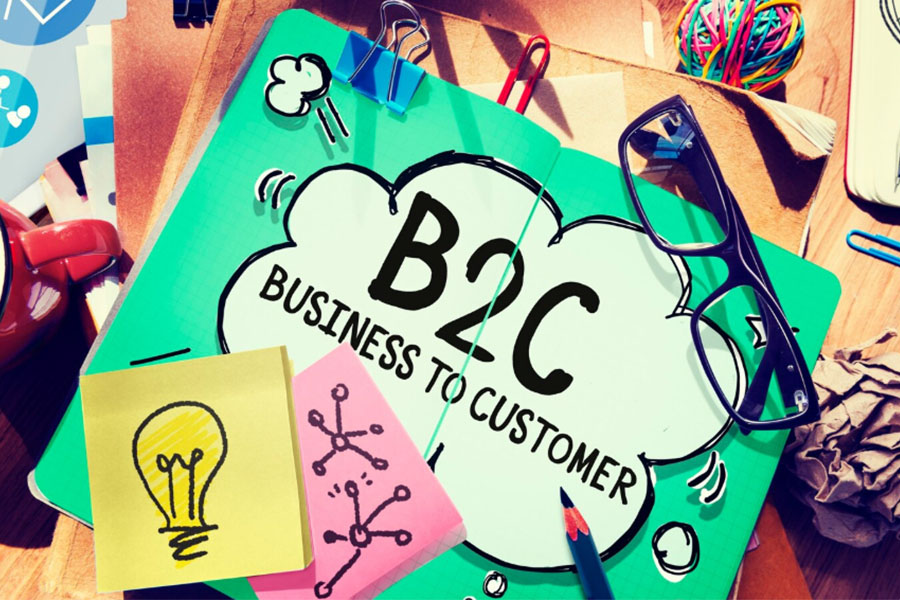
B2C means efficiency at scale. Look here first:
- Ad spend efficiency
Stop relying on last click attribution. Track CAC (Customer Acquisition Cost) by channel, performance, and audience segment. Don’t invest in what’s not converting profitably.
- Shipping and fulfillment
Consider free shipping by setting minimum thresholds that increase AOV without erasing profit.
Don’t pay for convenience that eats your margin – 3PLs are a good move only if they lower your per-order cost or significantly improve speed and scalability.
- Tech stack bloat
Don’t pay $79/mo for a “marginal maybe.”
Run audits periodically and get rid of what’s not driving conversion, retention, or operational speed.
B2B: Clean Up Complexity
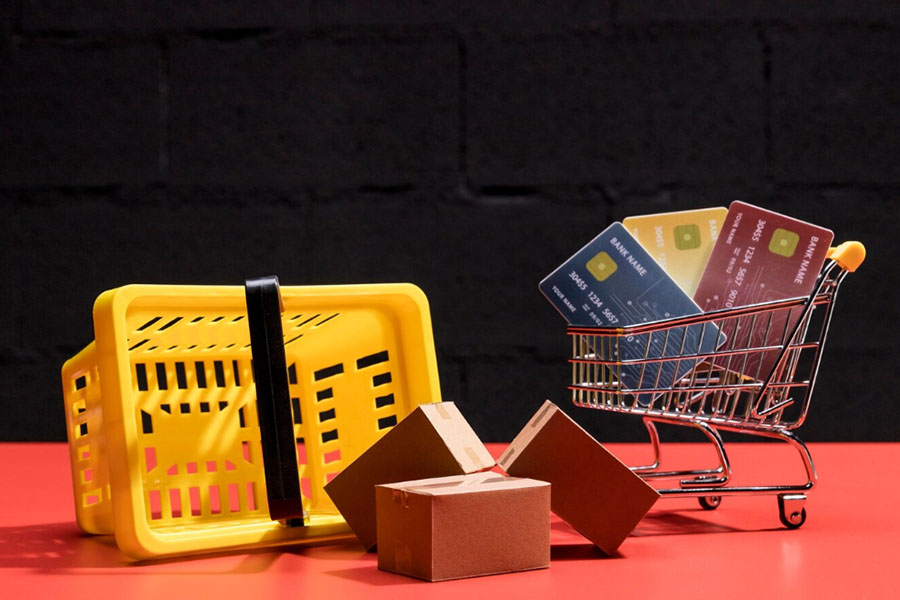
If you’re running bulk orders, custom pricing, and complex logistics – you could optimise these things:
- Inefficient fulfillment operations
Automate repetitive steps with ERP integrations and custom order logic.
- Inflexible supplier contracts
If you’re hitting MOQ targets consistently, you should be rewarded with better rates or payment terms.
- Manual processes
Change manual invoicing and order tracking with automation. B2B buyers expect speed.
Universal Steps to Spot Cost-Cutting Opportunities
These apply regardless of your business size or model. And while they may seem simple, most brands rarely bother digging into this data:
- Check your Profit & Loss by product category
Look for product categories growing faster than revenue, and do a cost check monthly.
- Recurring vs one-time costs
Identify ongoing expenses you can reduce or eliminate.
Subscriptions add up fast. Most brands underestimate how much they spend monthly on SaaS and paid tools.
- Measure ROI on every major expense
- Take feedback from your team
The people dealing with the daily mess sometimes have a much better understanding of where the money is going than you.
Most Important Metrics to Track
- Customer Acquisition Cost (CAC)
- Customer Lifetime Value (CLV)
- Customer Value Velocity (CVV)
- Average Order Value (AOV)
- Return Rate
- Fulfillment Cost per Order
- Marketing ROI per Channel
- Site Conversion Rate + Load Time

These metrics take time and a skilled analytics specialist to set up and track – but they’re worth gold once they’re set right – giving you a clear view of what’s working (and what’s not) across your business.
The Only Ecommerce Cost Optimization Strategies That Actually Matter
Now that we have covered everything you should inspect, we can focus on cost optimization strategies.
It all boils down to a few of the most effective improvements:
1. Ruthlessly Audit and Consolidate Your Stack
Every tool must either save time, cut costs, or drive revenue. If it doesn’t – it’s gone.
Audit every app, eliminate overlaps, and replace expensive ones with leaner alternatives that integrate better.
Also, consolidate everything under one dashboard, if possible.
2. Build a Profit-First Fulfillment and Inventory System
If you’re still managing inventory manually, you’re paying for it in write-offs, delays, and lost revenue.
Use advanced inventory systems like Zoho Inventory or Extensiv to prevent overstock and overselling. Shift to just-in-time inventory wherever feasible. And only negotiate bulk terms for SKUs that already move consistently.

If you’re fulfilling in-house, compare costs against the top 3PLs. Outsource only when it cuts your per-order cost or gives you scalability you can’t achieve internally.
And optimize packaging – not just for looks, but for weight, cost, and damage reduction.
3. Outsource Ecommerce Maintenance to Save Time and Money
This is one of the most overlooked cost-saving moves – and one of the smartest.
An underperforming site kills revenue. But hiring a full dev team is expensive, slow, and rarely flexible enough.
Outsourcing ecommerce maintenance gives you access to a dedicated, specialized team that handles bug fixes, performance improvements, security updates, and tech upgrades – without salaries, payroll taxes, training, or management.
You can focus on growth, not chasing broken plugins or last-minute fixes before Black Friday.
4. Usability Fixes
Forget flashy homepages. In ecommerce, the product detail page (PDP) is the real moneymaker.
It’s also worth remembering that a complicated checkout process kills sales. Improving it and other UX factors doesn’t cost much, but the returns are massive. Most online stores lose profit here without realizing it.
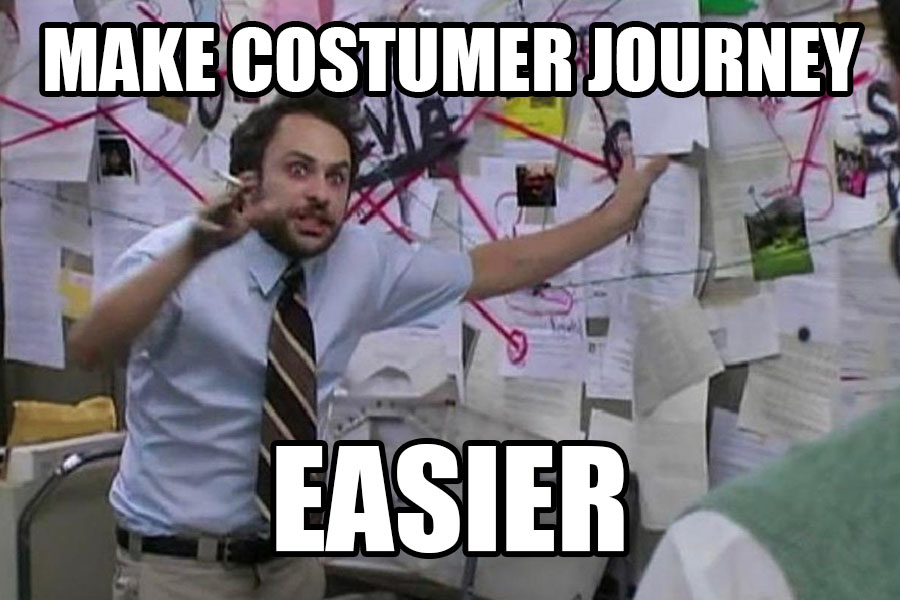
Product Detail Pages (PDPs):
- Use native visuals
- Show a clear value proposition above the fold
- Display key info instantly: price, sizing, shipping, returns
- Add trust signals: reviews, badges, guarantees
- Design mobile-first and keep it fast
Checkout flow:
- Enable guest checkout
- Use autofill and clearly show pricing/taxes upfront
- Integrate trust badges and one-click payment options
Website speed:
- Your mobile site should load in under 3 seconds. Anything more kills conversions.
- Run regular performance audits.
Return rate:
- Add native product visuals, sizing charts, and clearer copy to reduce buyer friction
- Offer incentives for exchanges instead of refunds
5. Focus on Retention Over Aggressive Acquisition
You don’t need more traffic. You need more value from the traffic you already have.
Retention is your highest-ROI growth channel – and most brands underinvest in it.
Start by building simple post-purchase interactions. Trigger reorder reminders. Use personalized emails and SMS to recommend relevant products. Run loyalty programs that give returning customers a reason to stick around.
Recover lost sales automatically with abandoned cart sequences.
And most importantly, build communities.
To see the progress, track important metrics: customer lifetime value, return customer rate, retention rate, and flow-specific revenue.
What Should You Prioritize?
Priorities are not the same for every ecommerce, and you’ll have to do the research.
But here are the improvements that will most probably be applicable, based on your business size and model:
| Small | Mid-Size | Enterprise | |
| D2C | – Website speed – Basic upsells – Simplify checkout | – Outsource maintenance – Increase CLV – Product bundling | – UX overhaul – Advanced retention flows – Backend optimization |
| B2C | – Trim tools – Improve packaging – Cart recovery | – Fulfillment audit – Outsource maintenance – Loyalty programs | – Real-time analytics – Custom email segmentation – Tech stack audit |
| B2B | – Automate invoicing – Reduce support load – Improve UX | – Tiered pricing logic – Inventory tracking – Maintenance partner | – ERP integration – Supplier renegotiation – Process automation |
Final Thoughts: Don’t Just Cut Costs. Build a Smarter Business.
Ecommerce cost optimization isn’t just about trimming expenses and hoping for the best. Everyone knows how to cut – that’s the easy part.
It’s about in-depth research, making smart decisions, and optimizing how every part of your business runs.
One approach gives you short-term savings. The other gives you long-term scalability and real profit growth – without burning out your team, bad customer experience, or putting your store at risk every time something breaks.
You now have the playbook. You know where the leaks tend to happen, how to spot them, and how to fix them.
But here’s what most brands still miss: tech is always one of the biggest and most expensive moving parts – and the one most people avoid touching.
If your ecommerce website is slow, buggy, or lives on plugins, every other optimization strategy is just a band-aid. Your money is lost through lower conversions, emergency dev costs, broken UX, and downtime you don’t even know is happening.
That’s why smart brands don’t do dev work on their own.
They outsource ecommerce maintenance to a dedicated, specialized partner who knows how to make a site faster, leaner, and much more profitable.
And that’s exactly what we do at W3 Lab.
We keep your ecommerce secure, updated, stable, and conversion-optimized – so you can focus on scaling your business, not wearing multiple hats.
Here are a few highlights of our work:
- Kompp Co – Motorcycles & Accessories Webshop
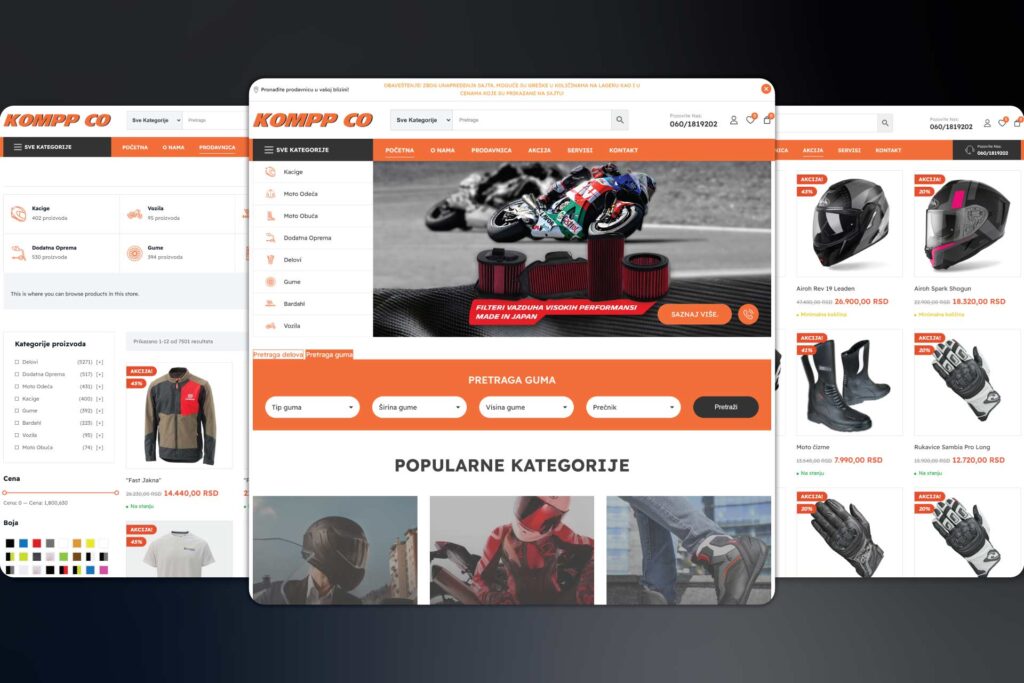
- Eklix – Generalist Online Store
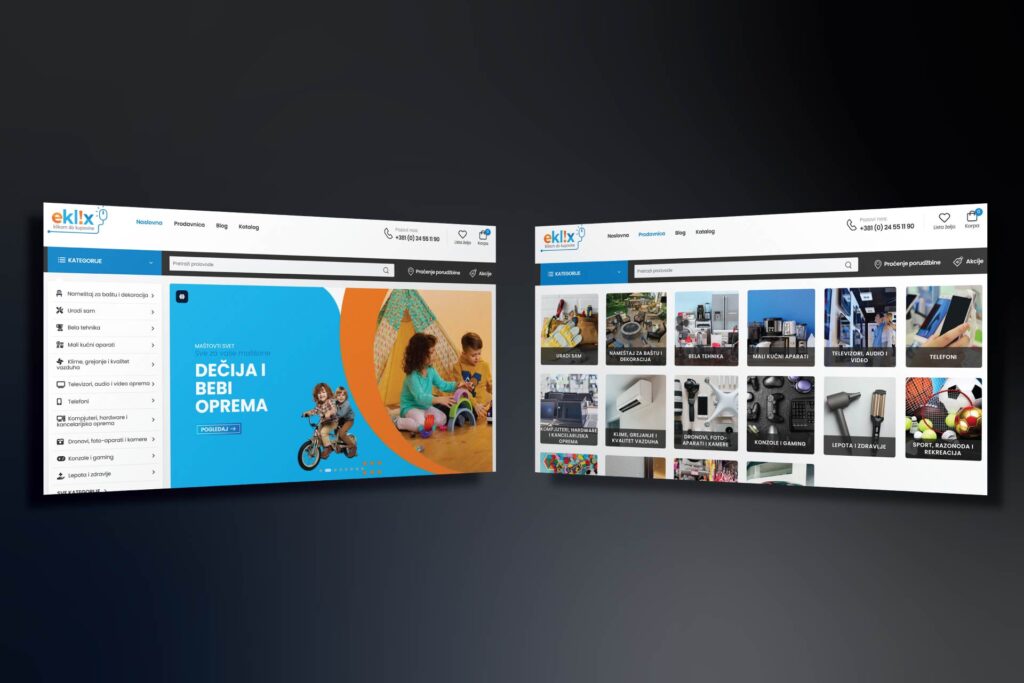
- People Like Us – Luxury Fashion Brand

👉 Let’s talk and show you how much you can save by outsourcing ecommerce website maintenance to the right team.



